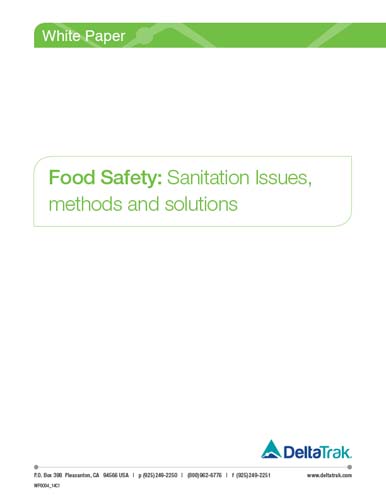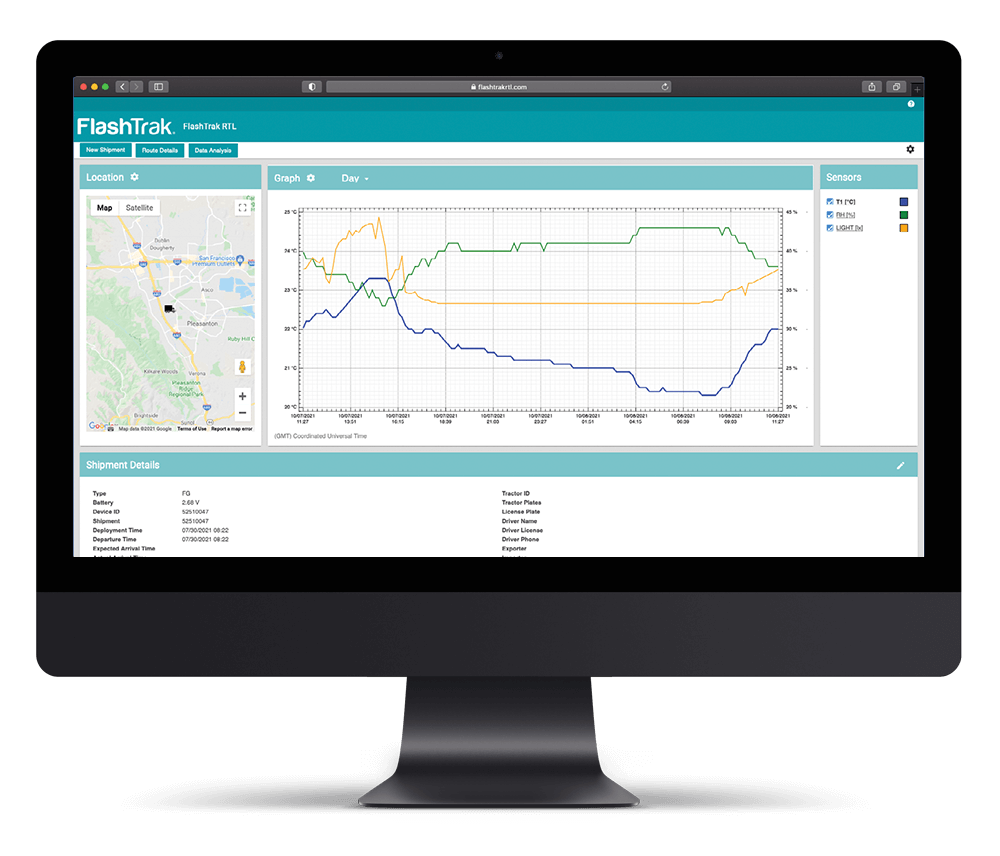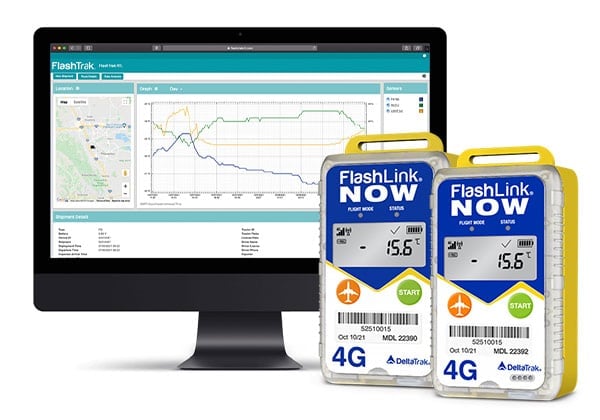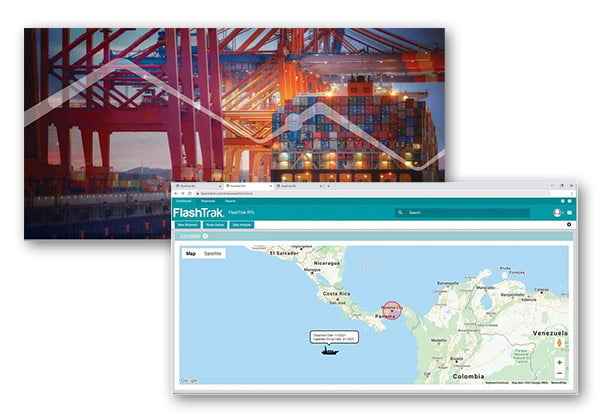 Download PDF
Download PDFSafe food is defined as food free of contamination with contamination occurring at any point in the growing, preparing, processing, storing, selling or serving of food. According to the Centre for Disease Control and Prevention, approximately 70% of all foodborne disease is due to viruses spread by direct or indirect contact with infected individuals. The CDC further states that 5,000 people die each year from tainted food, 325,000 are hospitalized and 76 million people become ill annually from food contamination.
Foodborne disease on a global scale is very difficult to quantify however, the Centre for Disease Control and Prevention announced in December of 2010 new estimates on foodborne disease illness, hospitalization and deaths. The CDC reports that approximately 48 million people fall ill with 128,000 requiring hospitalization and 3000 individuals dying each year. Additionally, a World Health Organization report in 2004 listed that disease associated with diarrhea was the 5th leading cause of death worldwide with the majority of those deaths attributed to food and water contamination. Although these statistics are not solely related to commercial food establishments it is a startling cautionary tale for food handlers. Food handlers worldwide should have a solid understanding of the sanitation process which is one very important step in combating foodborne disease. Sanitizing food handling equipment reduces bacteria and viruses to a safe level. Understanding food related sanitization methods, what and when to sanitize and the tools to use for sanitization play vital roles in the fight against foodborne disease. This paper looks at these issues along with sanitation issues and costs.
Common Problems
Food handlers face a myriad of issues with regards to sanitization. Poor sanitization within the establishment could lead to disease, illness or even death. This in turn would most probably lead to loss of customers, loss of reputation, lawsuits, fines and possible business closure. Lack of proper sanitation procedures or tools can also result in failure to meet food safety regulations, legislation or inspections which in turn could cost the company its license or significant funds to rectify regulatory citations.
Associated Costs
Costs associated with a food establishment's sanitation policy & procedures include equipment, materials, training, and inspection fees. Special sanitation equipment may be required that must meet set standards established by state and local rules and regulations. Monitoring equipment must be on hand to ensure equipment compliance. This may include thermometers, test strips and papers, and chemical indicator strips. Chemical sanitizers such as chlorine, iodine or quaternary ammonium compounds need to be purchased and maintained. In addition to equipment and materials establishments must provide ongoing training to its employees on the proper sanitation procedures and pay for and comply with periodic inspections. These sanitation costs are needed to run the business on a daily basis and when compared to the costs of risking illness, death or business closure while not insignificant are certainly a necessity.
What Needs to be Sanitized
Each establishment strives to maintain a clean environment but cleaning and sanitizing are actually two separate activities. Cleaning removes debris such as food particles, grime & grease but sanitizing is the process of taking a clean item and reducing the level of microorganisms to a safe level. All equipment must be cleaned but some equipment and utensils must also be sanitized. There are four basic groups of items that need sanitization, employee hands, food contact surfaces and tools, hand contact surfaces & tools and items that are most susceptible to bacterial growth.
Probably the most important issue when discussing sanitation within a food service establishment involves human touch. The human hand carries millions of bacteria, some good & some bad, at any given time. Food handlers must not only frequently wash their hands but should also use hand sanitizing solutions developed using appropriate safe ingredients as they will likely come in contact with food during the course of the day. Employers should pay particular attention to ensuring employees actually know the proper procedure for washing hands and provide the appropriate hand sanitizing solutions.
All surfaces or tools that come into contact with food must be sanitized. This would include work surfaces, preparation boards, cutting boards, preparation tables, mixers, knives, ladles, tongs, and containers. Anything that comes in contact with food should be sanitized.
Food borne disease in a food establishment is easily transmitted by human contact. Infected persons handling food or food containers can easily contaminate food. Personal hygiene and the sanitization of items that food handlers touch is also a very important sanitization area to have a plan for. Any contact surfaces touched by the human hand should be sanitized. These types of items include facets, door handles, switches, cupboards, drawers and dispensers.
Within a food service establishment there are areas and tools that are more susceptible to bacterial growth. These items need attention to sanitization. Examples of these types of tools or equipment are cleaning and trash equipment such as mops, towels, scrubbers and trash containers.
When to Sanitize
How often to sanitize is an important component of an establishment's food safety plan. Some items may need sanitation on a constant per use basis whereas other equipment might need sanitizing on a daily, weekly, monthly or even quarterly basis. Work surfaces such as cutting boards used to cut meat and poultry need to be cleaned and sanitized immediately after use. Thermometers used to test food should be sanitized after each use. Other items such as meat slicers or grinders using the same type of raw meat must be sanitized throughout the day or at least every four hours according to one report from the United States Department of Agriculture. However, if the equipment is being stored and used in a room at 41 degrees Fahrenheit that equipment can be sanitized every 24 hours. An established set of rules for the sanitization of all equipment coming into contact with food should be documented and communicated to all food service personnel.
Sanitization Methods & Mechanisms
The basic process steps involved in sanitization are:
1. Pre-cleaning – Remove, scrape and rinse to remove loose food or dirt 2. Wash - Use detergent solutions to remove stuck-on food or dirt 3. Rinse to remove food/dirt and detergent 4. Sanitize to kill attached surviving bacteria and viruses 5. Air Dry
The sanitization step is accomplished by using either a thermal or chemical approach. The thermal approach uses very hot water or steam at a specific temperature and specific contact time. The thermal or heat sanitizing method for food utensils and equipment can be used in both a manual or mechanical warehousing set-up. Manually sanitizing equipment requires that the hot water must be 171 degrees Fahrenheit or above and the equipment must be immersed for at least 30 seconds. When using the heat method in mechanical warehousing equipment the sanitizing rinse must fall between 180 & 194 degrees Fahrenheit. Thermometers or thermal labels should be on hand to routinely check the temperatures.
Using chemicals to sanitize equipment can be accomplished by submerging the equipment in or brushing or spraying an appropriate sanitizing solution on the equipment. The solution must be an approved solution and the equipment must be exposed to the solution at a set temperature for a set time. These vary depending on the type of solution used. The most common sanitizing chemicals used in the food service industry are Chlorine, Iodine and Quaternary Ammonium Compounds. Typically chlorine sanitization requires exposure for 7 seconds at a temperature of 100 degrees Fahrenheit. There are some variations depending on pH factors. Solutions that contain Iodine are called iodophors. Equipment sanitation with this solution requires exposure for 30 seconds at a temperature between 75 and 120 degrees Fahrenheit. Quaternary Ammonium Compound is another chemical solution used in the food industry. This chemical requires equipment to be exposed for 30 seconds at a temperature above 75 degrees Fahrenheit.
Factors Affecting Chemical Sanitization
There are certain conditions that can reduce the effectiveness of the sanitization process. Some sanitization chemicals will kill any type of microorganism whereas others are more selective in which microorganisms they can kill. Food establishments should read the manufacturer's label for the appropriate solution. Physically, a surface must be clean in order to be sanitized. Equipment that is not clean cannot be sanitized therefore thorough cleaning prior to sanitization is vital. The concentration of solution is important as the use of too little chemical will result in not killing the microorganisms to a safe level and using too much concentration could lead to waste of materials and possibly corrosion of equipment. Chemicals should be used with water temperatures between 75 and 120 degrees Fahrenheit to be the most effective. Higher temperatures should be avoided as the chemical's effectiveness is lost with evaporation. Each of these issues can be avoided with strict adherence to the chemical manufacturer's labels.
Sanitization Tools for Food Handlers
There are a variety of sanitization tools available to food handlers including chemical concentration test papers and strips, alcohol wipes, thermal labels and thermometers. Some examples of test papers, strips and include:
- Test strips to ensure that the appropriate level of chlorine is being used in low temperatures dishwashers. These chlorine test papers are available to dip into the water and color compare against a level chart.
- Similarly, quaternary ammonium solutions used in manual washing and sanitizing equipment have quaternary test strips that the tester compares on a color chart to confirm the chemical's appropriate concentration level.
Also available are tools to confirm temperatures in dishwashers and warewashers. These types of tools may include thermometers or thermal labels. Examples include:
- Thermal labels are self adhesive labels that can be adhered to plates for placement in a high temperature dishwasher to assure that the temperature reaches the appropriate 160 degrees Fahrenheit needed to sanitize the items during final rinse.
- Another re-useable option is a dishwasher thermometer with an LCD display that can also be used to monitor the appropriate temperature. These types of thermometers are also available with protective holders to shield the LCD display from water spray and allow for easy readings.
- Also available for use in sanitizing thermometers are alcohol wipes. As thermometers are used in the cooking, testing and monitoring of food they must be sanitized between each use so as to avoid cross contamination.
Conclusion
Understanding the importance of sanitization and the methods and tools involved in the sanitization process is vital for all food handlers. Food establishments need to ensure that their food safety plans address sanitation with specific rules on what and when to sanitize. Additionally, they need to provide thorough training on the thermal and chemical methods involved in sanitation and tools used to test and monitor these processes.
References
Centre for Disease Control and Prevention. (2010). Estimates of Foodborne Illness in the United States. Georgia: CDC Author
Chartered Institute of Environmental Health. (2002). Food Safety First Principles For Food Handlers (3rd ed.). Canada: Author
McSwan D., Rue N. & Linton. (2000). Essentials of Food Safety & Sanitation (2nd ed.). New Jersey: Prentice-Hall, Inc.
National Environmental Health Association. (2010). Certified Professional Food Manager, Food Safety Training. Canada: Author
Schmidt R.H.. (1997). Basic Elements of Equipment Cleaning and Sanitizing in Food Processing and Handling Operations. Florida: University of Florida
World Health Organization. (2004). The Global Burden of Disease: 2004 Update. Switzerland: WHO Press: Author









